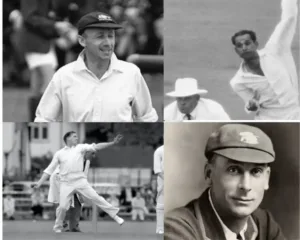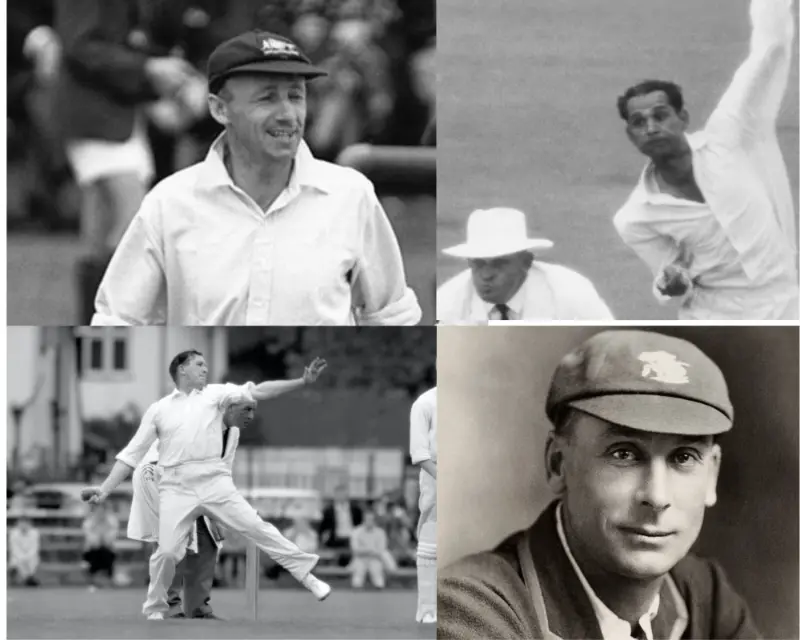Cricket Records: All of them are special.
All sports, at the end of the day, are reduced to statistics. While they might look like innocuous numbers, they are what tell a tale long after the moment is gone. They may not have the ability to be poetic about the brilliance of the moment, but they do serve as a reminder of the small details that need recording too.
Records, they say, are meant to be broken, and most of them do get broken. Then there are some that seem to live on forever. Like every sport, cricket has its own share of records that by the very enormity of the feat seem unbreakable. While some of them are created over a career spanning a long period of time, others are managed in a game.. Here are a few cricket records that look unlikely to be matched. There is so much to be said about each of these, which will be told sometime later.

The Don’s batting average: The ultimate cricket record
There was no one like the Don, and neither would be. In a career that spanned about 20 years, and in 80 innings over 52 Test matches he scored about 7000 runs. Sir Don Bradman put to sword any bowling attack he faced. Crowds gathered to watch him tear apart attacks, while bowlers ran out of ideas. So much so that the English had to devise the absolutely devious Bodyline theory to try and stop him.
In what is probably one record that will never be broken, the Don averaged an unbelievable 99.94 runs per inning. It is only when you know that the second-best Test match batting average is a meager 60 runs that the feat is understood.
Bradman with his feats transcended borders, sports and generations. His batting average actually gifted the reference Bradmanesque to the world of words.
Jim Laker’s 19 wickets in a Test Match:
A surreal performance by the English offspinner One that destroyed the Australians and might as well end up being impossible to match. In 1956, on a vicious dustbowl of a wicket at Old Trafford, Jim Laker , at the age of 34 , dismantled a strong Aussie batting line in a performance which would be well nigh impossible to match. As the spiteful wicket egged him on, Laker ran through the Aussie lineup to end up with figures of 9-37 and 10-53, with his spin partner Lock claiming the only other one. His haul of 19 is the highest number of wickets taken in Test match history. It is a record which might stand the test of time.
It has to be noted here that in a warm-up match for the same 1956 Ashes test series, playing for Surrey against the touring Australians, he took 10-88, as if warming up to do the same in the test match to follow.
Bapu Nadkarni’s miserly spell. :
In 1964, Chennai was witness to a remarkable spell of spin bowling from the diminutive and soft-spoken Bapu Nadkarni. as he sent down 131 deliveries without conceding a run. An English batting line-up weakened by stomach ailments and dropping anchor might have helped Bapu, but then the task in itself is difficult to imagine being repeated, especially as the game in its current state is more free-scoring than ever.
He finished the match with a score of 32-27-5-0.
While it might seem like a once-in-a-lifetime effort, it was just another day for Bapu, who had a career economy rate of 1.67 runs an over, across 1500 overs in test cricket. In first-class cricket, he was stingier, with a rate of 1.64 runs conceded per over across more than 5000 overs.
In the 1960-61 series against Pakistan, he had returned figures of 32-24-23-0 at Kanpur, followed by 34-24-24-1 at Delhi.
A true miserly spinner, Bapu Nadkarni was to go on to become the Indian cricket team manager and also donned various other administrative positions.
Jack Hobbs, with 199 first-class centuries
Well and truly one of the greatest cricketers and definitely the best English cricketer ever, Sir Jack Hobbs was a colossus of the game. Playing first-class cricket almost up to the age of 53, Hobbs scored an unimaginable 199 centuries and 273 fifties. In 834 matches, having played 1325 innings, Sir Jack scored 61760 runs at an average of 50. This surely is something that is well and truly impossible to match.
An interesting fact is that more than half his hundreds came when he was over 40, and he remains, at 46 in 1928–29, the oldest man to score a Test century. Jack Hobbs was the first cricketer to be knighted and why not.
While there are probably many more cricket records that may remain as records for long, each of these four is almost definitely unbeatable. The fact that they stand as tall as ever, even after a good seven decades, could mean they might remain so for eternity.
================================================================================




Nicely crafted and detailed information.
Thank you.
thanks Kedar…
Great effort
Thanks sirji….nice to know you liked it
Great one. The recent Ind – SA match ending in 107 overs could be one that could definitely stay for a long, long time too.
Yes, it would I suppose it is the shortest one, Just 642 ball wow… let us see how long it stays , given the T 20 mode that cricket lives in , it might still be broken.
Hmm.. nice one.. I am aware of Don Bradman record alone.. looking forward for next article..
The records of Bradman, Laker and Nadkarni are often talked about. But Hobbs’ huge century record is not. May be because he has only 15 test centuries.
Good to know all those records